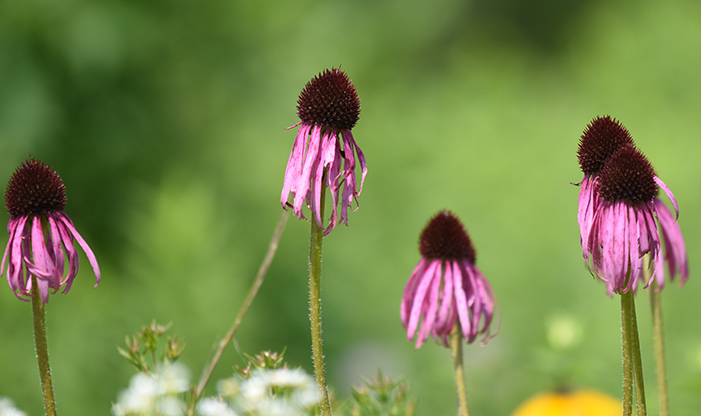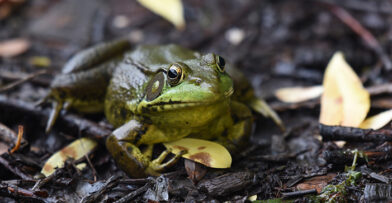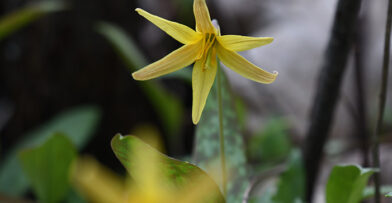In the summertime, prairie plants begin to grow into the tall, colorful wonders that will capture our imagination. These sturdy beings are able to survive throughout the seasons and still produce the delicate-looking flowers people enjoy.
Prairies have evolved with harsh winters, grazing buffalo, and frequent fires. Growing points of the plants are located low to the soil, or just below the soil’s surface, safeguarding against above ground disturbances. Prairie plants symbiotically share the resources of sun, water, and soil. This use of space is best exhibited by root systems, which make up 67% of a prairie grass. Grasses form large netted webs of roots knitting together the surface of the prairie. Forbs (flowering herbaceous plants which are not grasses) plumb the depths of the soil, traveling several feet down in search of water.
Viewing Remarkable Flowers
The prairie begins at ground level each spring and by July is up to 10 feet tall, featuring an array of stunning flowers. Evolution has stripped grass flowers to the bare essentials required for pollination. Smell the scent of buttered popcorn and look for the Prairie Dropseed (Sporobolus heterolepis). It’s one of the few native grasses with a fragrant flower. Look for Culver’s Root (Veronicastrum virginicum), whose densely-packed clusters of tiny spiky white flowers rise upward on a plant that stands between two and six feet tall. Coneflowers (Echinacea purpurea) show that orange and purple are a good color combination. Bee Balms (Monarda didyma) boast a fragrance of Earl Grey tea. At eye level Rattlesnake Master (Eryngium yuccifolium) grows prickly blue green spheres. Even higher, Cup Plants (Silphium perfoliatum) and Compass Plants (Silphium laciniatum) stretch to 10 feet, providing food and water for many species of prairie animals.
Hike our new boardwalk on the Gateway Trail to see stunning prairie plants up close. Bring a magnifying lens, as grass flowers are petite marvels of simplicity. If you’re looking to learn more about prairie ecology and the plants you’ve seen, we carry a number of items in our Nature Store that will help you. Wildflowers of Wisconsin and the Great Lakes Region by Merel Black and Emmet Judziewicz is a great resource. A handy guidebook that will fit in your pocket is Flower Finder by May Theilgaard Watts. Stan Tekiela’s Wildflowers of Wisconsin is a very useful book, as is his laminated guide Wildflowers of the Midwest. Use them to identify flowers as they bloom throughout the summer season. The prairie is different every day, so visit often to observe the ever-changing wonders of the prairie.


